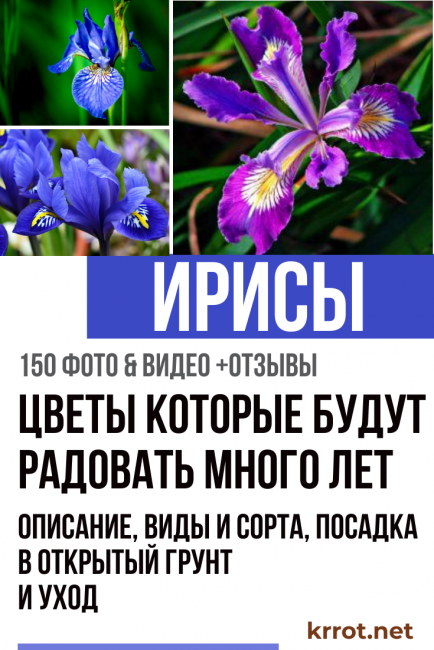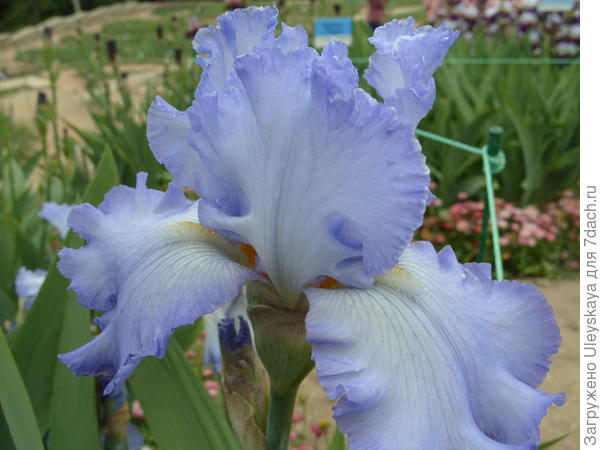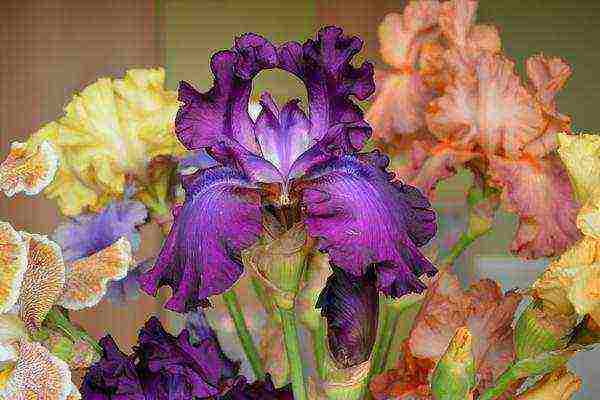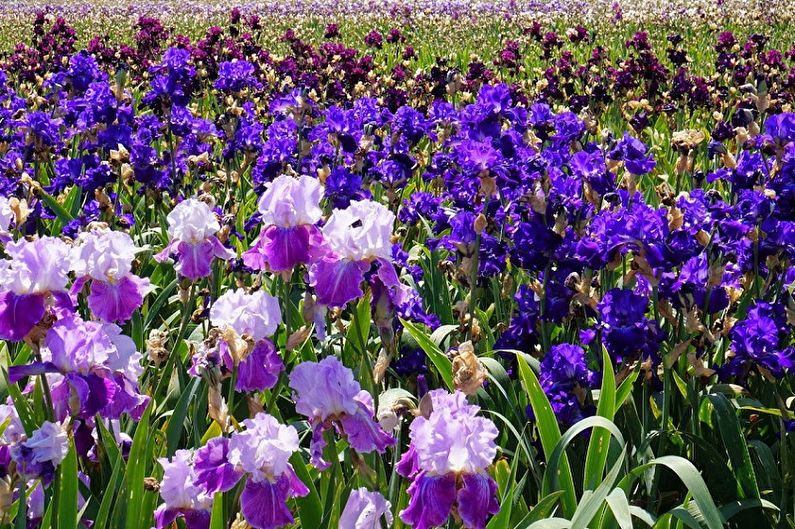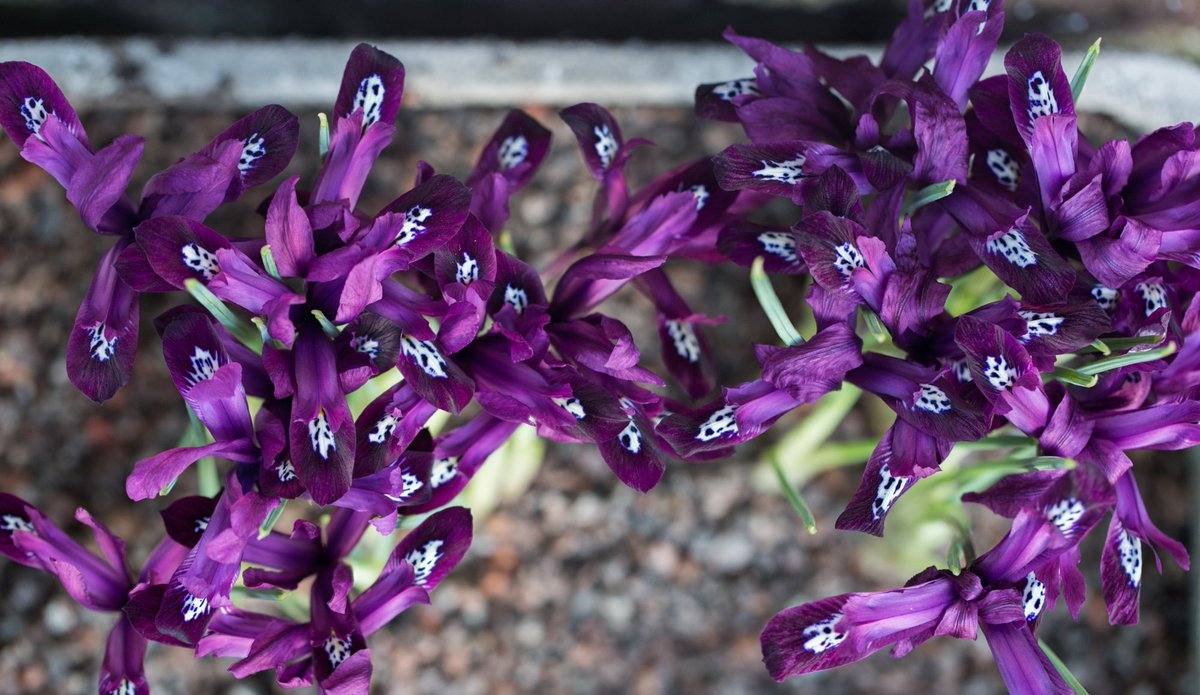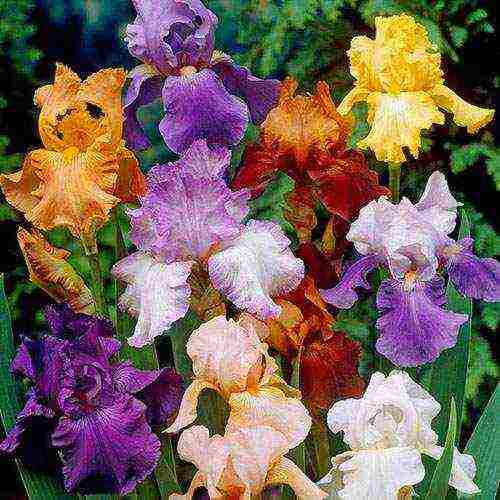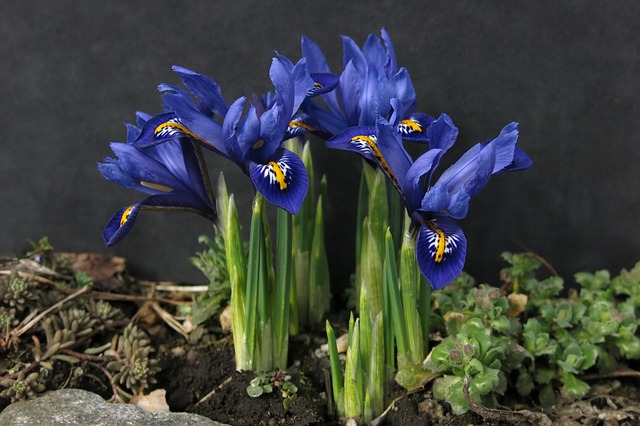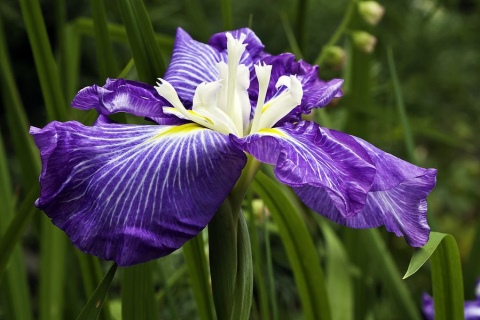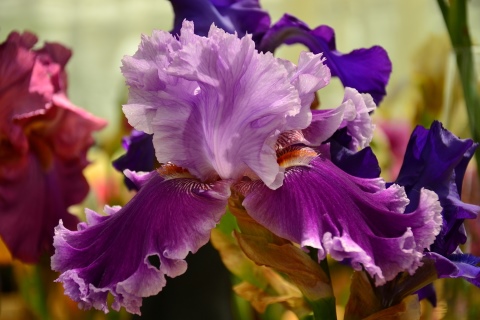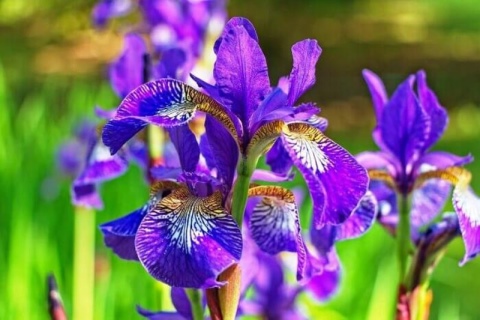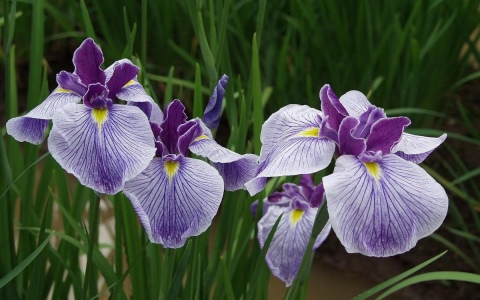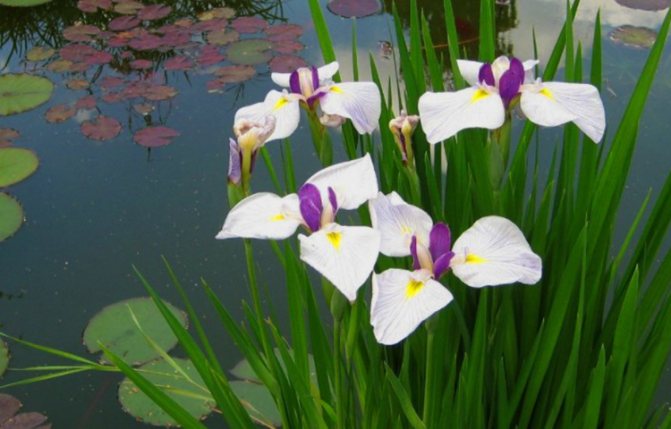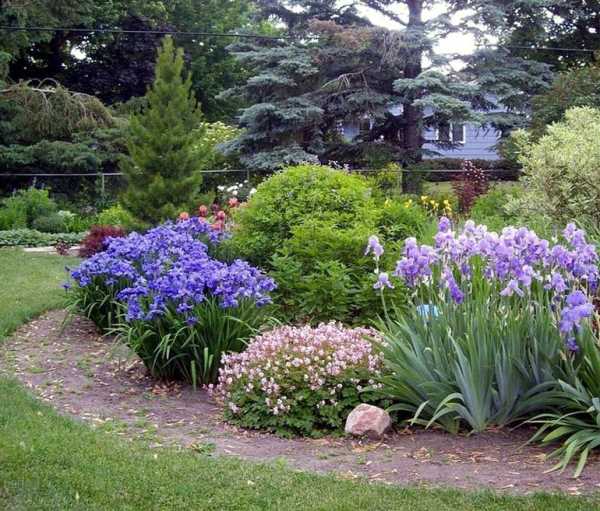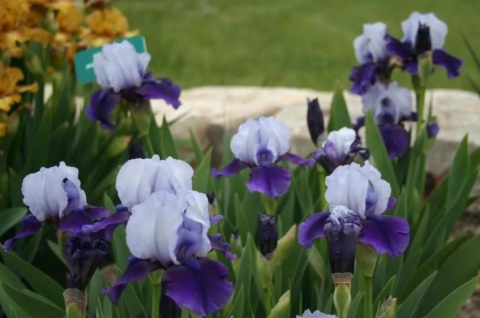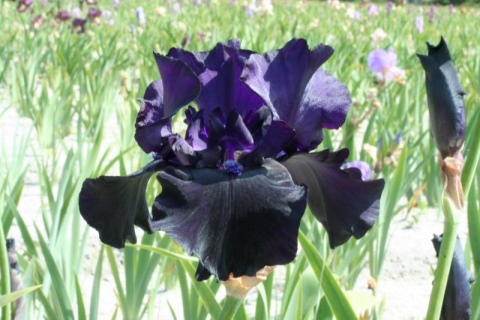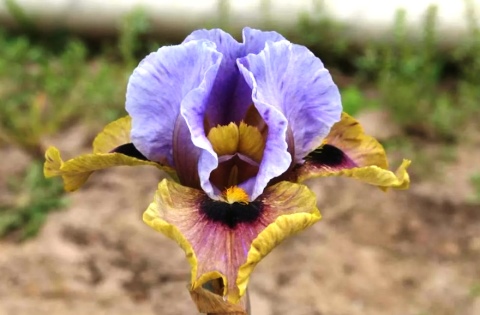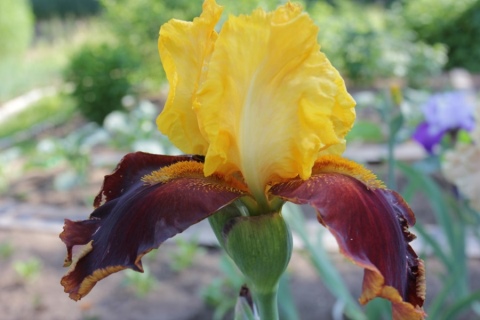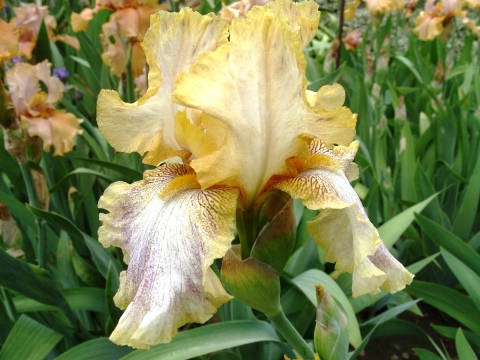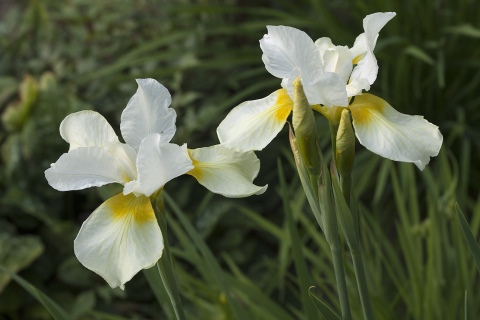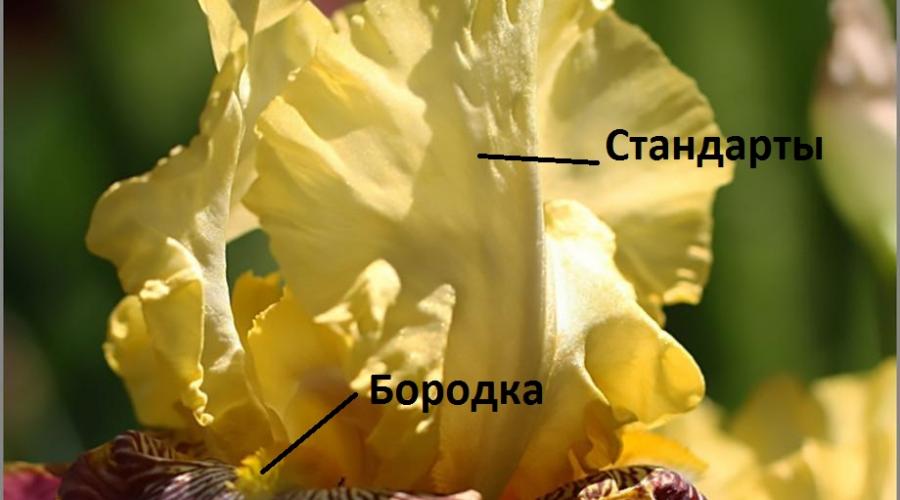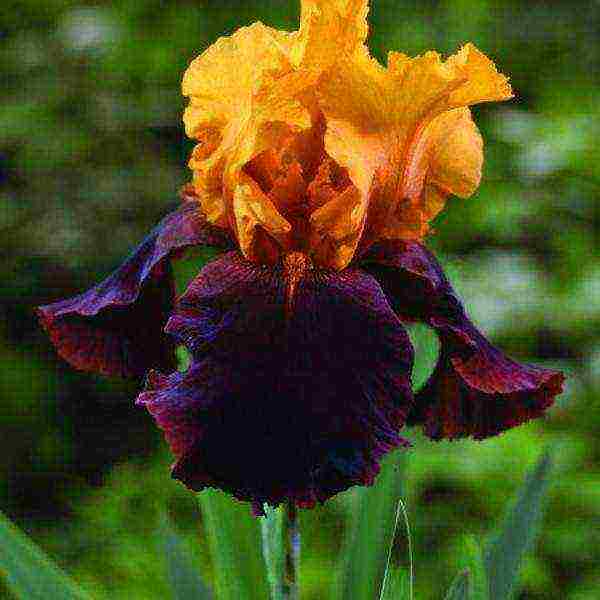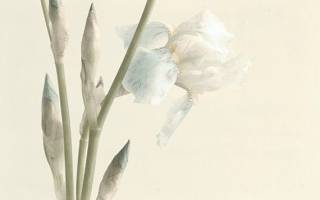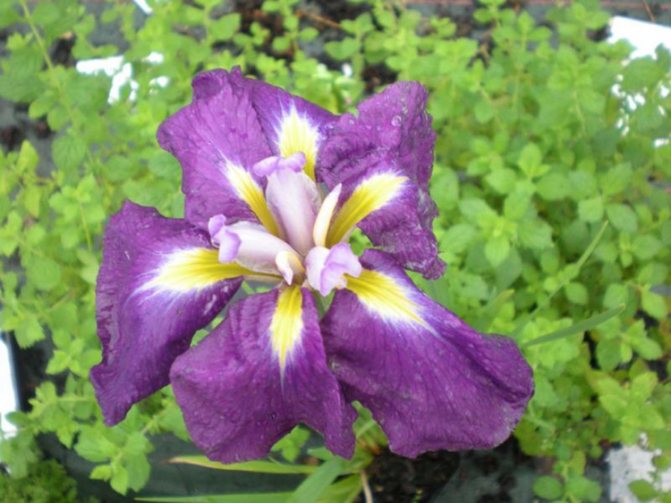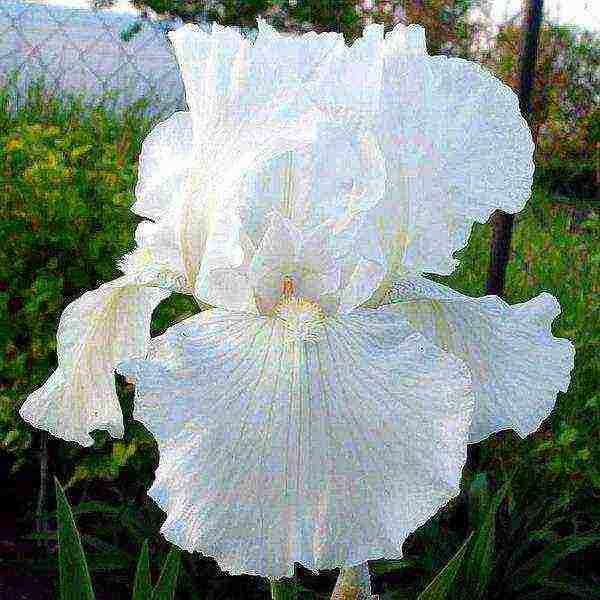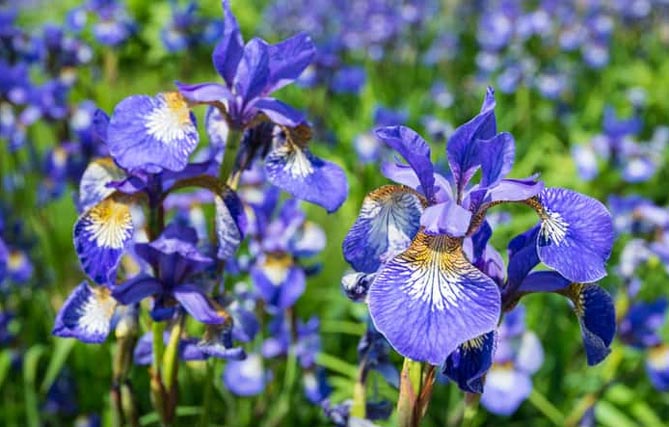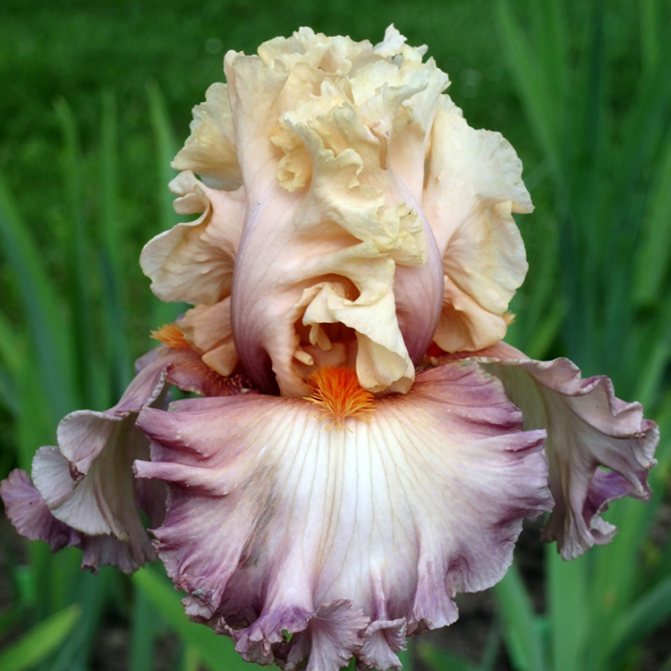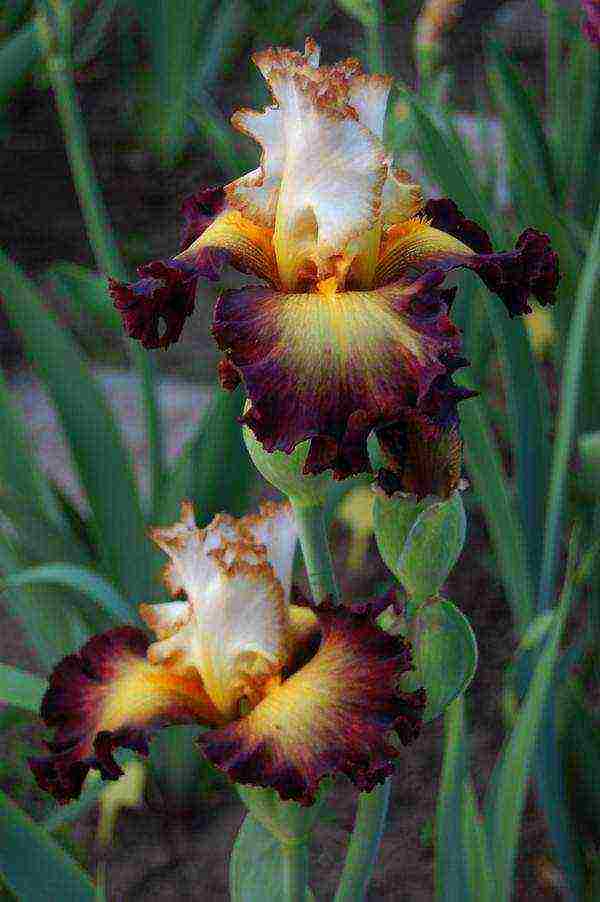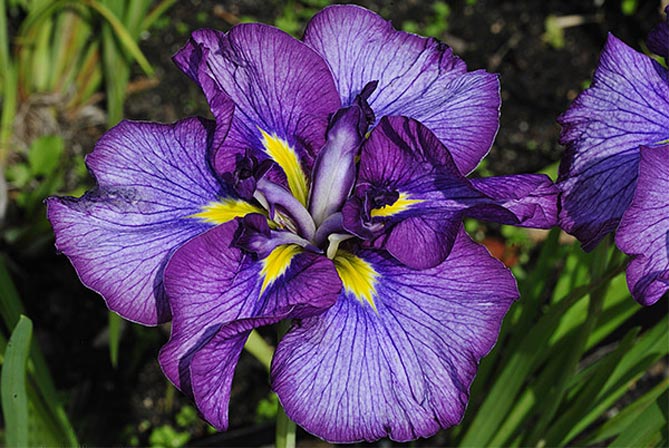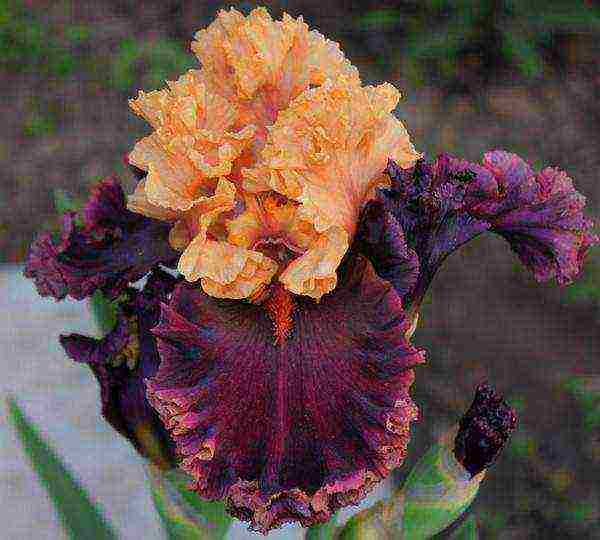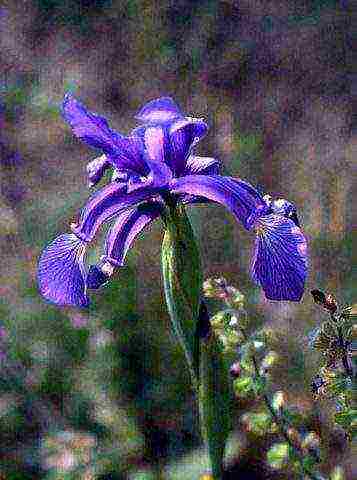SIMILAR MATERIALS
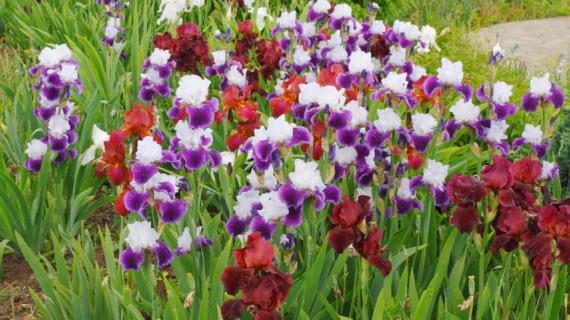
2
Iris is not just a flower, but a whole culture. The iris genus, or iris, includes about ...
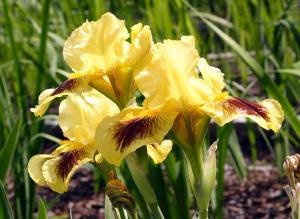
1
5
For one hundred and fifty years of selection, a huge number of all kinds of iris varieties have been bred. They are divided into ...

1
1
Daylilies belong to the lily family. The genus of these perennial herbaceous plants includes ...
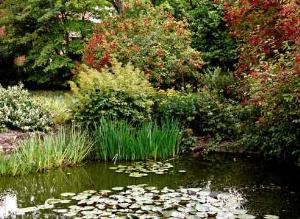
If you got a wetland for construction, there really is not much reason for joy. ...
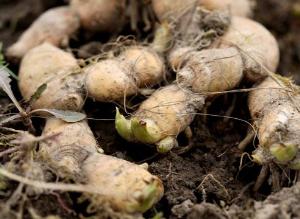
1
The standard iris planting unit is a one-year rhizome growth. In the middle lane, they ...
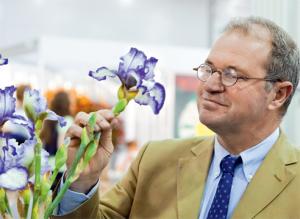
2
Richard Kaye is the most famous iris breeder in Europe, winner of the Warbuton Medal for his contribution ...

Water-loving - among the irises there is a garden group with this name. They really love water very much ...
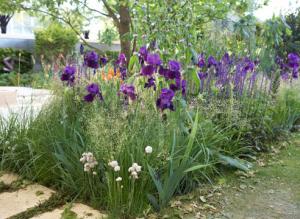
5
4
Looking at the modern varieties of Siberian irises, it is hard to believe that their active breeding has begun ...

5
Beautiful and unpretentious Siberian irises can be called an almost ideal plant. But even with him ...
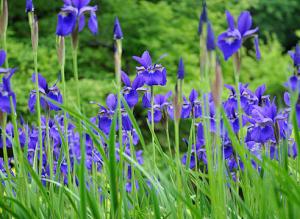
2
Now it is not a problem to buy beardless irises of different groups. And if you choose the right varieties, you can ...
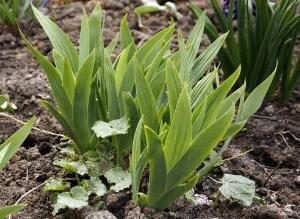
1
The famous iris grower Yuri Pirogov answers the three main questions about the cultivation of irises. Knowing these ...
Japanese iris varieties
Japanese irises are distinguished by flowers that resemble orchids in shape, sizes up to 25 centimeters. In Japan, gardeners place irises so that they can be admired from above, as this is how they look the most attractive. Experienced experts advise to maintain a distance of 30 centimeters between individuals. The varieties listed below are very popular.
Happiness ghost
Iris includes six white petals interspersed with a faded pink hue. Gradually, the bud turns completely white. Flowering can be observed from mid-July.
Vasily Alferov
A real record holder among irises, its height usually reaches 1.1 meters. The peduncle is quite strong and has up to 4 flowers with a diameter of no more than 20 centimeters. The color of the buds is expressively purple. Flowering starts at the end of June and lasts up to three weeks.
Altai
The flowers of the plant of this variety have a lilac color, the tongue is lemon. Flowering begins in July and lasts about two weeks. A very beautiful and graceful representative of the species.
Vivat Rodionenko
The bud is assembled from six petals of a delicate purple shade with blue veins and specks. Snow-white pistil. A peduncle can have up to two flowers. The height of the plant is about a meter. Flowering begins in July.
Frost-resistant varieties
You can also plant Japanese irises in rather cool regions. In this case, it is recommended to give preference to the following varieties: Nawzi kaa, Oyoodo, Dobrynya, Polenitsa.
Description of species
Today, chrysanthemum is represented by a huge number of species. Among the most demanded flowers, artificially bred and growing in the wild, it is worth highlighting the following species.
Indian
Despite its name, China is the birthplace of culture. This species is very often used as a mother plant for producing small hybrid chrysanthemums. As a rule, flowering in plants occurs in the autumn months. These are bright plants, notable for their visual appeal.
Korean
This species includes hybrid plants with small diameter inflorescences. Flowers firmly endure negative temperatures, in the open field they can be successfully grown even in the middle lane.
Autumn
Shrub perennials, flowering in September, and the duration of this phase allows you to see blooming chrysanthemums until winter. The inflorescences of the crops are simple, predominantly white in color.
Prominent
Chrysanthemums are large in size, the height of which can reach 120 centimeters. The bushes of the culture are quite large and fluffy. In this case, the inflorescences can be not only simple, but also terry. Most of the color is yellow and white. As a rule, the diameter of the inflorescences reaches 5-8 centimeters.
Sowing
Chrysanthemums develop an erect stem, the height of which usually varies between 40-60 centimeters. The flowers are outwardly similar to chamomile. The color of the inflorescences is white, sometimes there are yellow varieties. The average flower size is in the range of 4-5 centimeters.
Odorless
A dwarf bush, which is usually 18-20 centimeters high. Chrysanthemums develop terry-type inflorescences, painted in a snow-white color, no more than 5 centimeters in size.
Scaphoid
A flower whose height will be from 40 to 75 centimeters. Baskets can be anything, cultures are mostly multi-colored. The diameter of the inflorescences varies between 5-6 centimeters.
Crowned
A branchy shrub with straight stems, developing up to 80-85 centimeters in height. The inflorescences are simple or double. The color is white or yellow. The diameter of the inflorescences does not exceed 7 centimeters.
Arctic
A perennial of medium size, which is found naturally in northern Europe, as well as in Asia and America. The species is popular due to its frost resistance. The culture has creeping stems that form a beautiful carpet, the flowering phase in plants occurs in October-November.
Swamp
A medium-sized plant, the inflorescences of which are outwardly similar to field chamomile. The flower develops in the form of a bush, on which many stems are formed, located at an angle or in an erect form with flowers at the tops.
Keeled
A culture whose height is 60 centimeters. May have a different color of inflorescences. The species is represented by varieties with simple or double flowers. Some varieties reach only 30 centimeters in height, there are also representatives with a stem height of 70-90 centimeters.
Popular varieties of cultivated plants
In city parks, forest park zones, in backyards, summer cottages and garden plots, the following types of irises are most often grown:
|
|
Bearded iris
The most common type of iris. This variety has more than 520 cultivars. It is a viable and extremely hardy perennial plant. ‘)); There are 3 categories of bearded irises according to the height of the bush:
A characteristic feature of the species is a "beard" at the lower petals - a fluffy strip of thick short "hair". It grows at the bottom of the midrib of the outer lobes |
 |
Siberian irises
This species is similar to the bearded iris, but the Siberian ones have several differences:
|
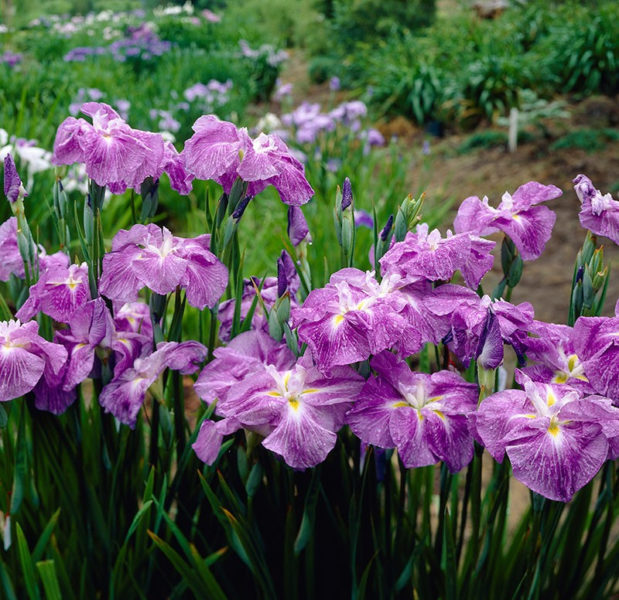 |
Japanese flowers
The birthplace of this culture is Japan. In Russia, it is cultivated in the Primorsky Territory, the Caucasus and the Black Sea coast. In the middle lane, the plant lacks warmth and illumination:
|
 |
Swamp irises (irises)
This culture in Russia grows everywhere:
|
 |
Bulbous crops
These flowers were bred by British, German and Dutch breeders. In fact, these are not irises, but plants related to them:
In the south, the Germanic iris grows actively. In the northern regions, thermophilic bulbous crops do not take root. |
Bulbous irises: types and varieties
Experts have long bred irises that grow from bulbs. The great advantage of these crops is that they bloom incredibly early buds. Some even call these irises "snowdrops". At the same time, the flowering is very violent and beautiful, so such flowers will stand out in the flower bed. Consider the main types of this culture and name the best varieties for a summer cottage or garden.
Iris net
A very small flower that does not grow up to 15 centimeters in height. It can safely be in the same area without transplanting for several years. Flowering lasts about two weeks, and dying off occurs in mid-June. A characteristic feature is an unusual two-tone color, there is a characteristic prominent shading. The following varieties are recommended for planting: Dunford, Baker, Vinogradov.

Juno
A very rare variety of culture that will be a godsend for any grower. Peduncles sometimes reach a height of 40 centimeters. The leaves are crescent-shaped. Up to five buds can be set at a time. Experts advise removing the bulbs from the soil in July, drying them thoroughly and returning them for planting in September. The best varieties: Nicholas, Caucasian, Orchid.
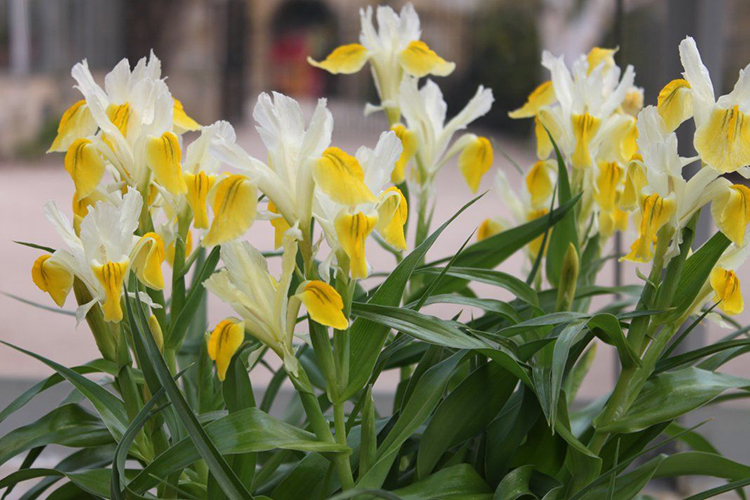
Xyphyums (Dutch iris)
Such a flower is quite capricious, so not everyone likes to grow it.
Cultivation of culture is possible only in a situation when it is surrounded by great care and close attention. Iris will not survive even small frosts, so it is not suitable for growing in extreme cold conditions.
Mainly cultivated as an annual. Mixes of several varieties are usually sold.
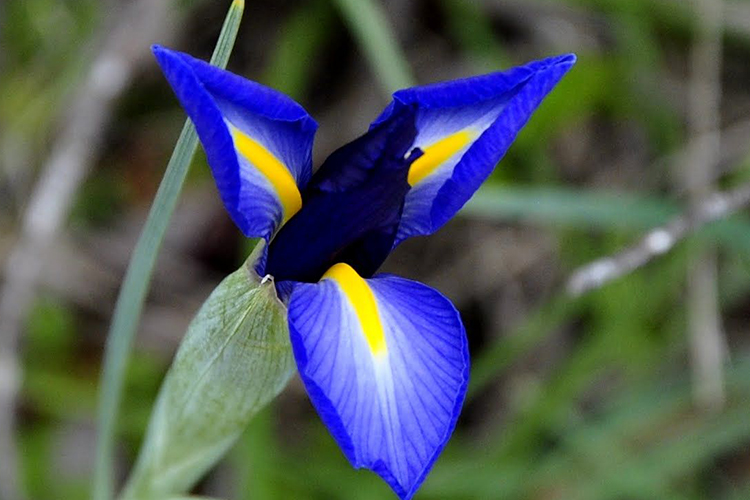
Bearded iris varieties photo
For arranging flower beds, it is often bearded irises of the photo variety with the names of which we will now consider are chosen. They are divided by color into iridescent, two-tone, bordered, as well as one-color and two-color. Choosing several varieties at once, you can decorate the garden very beautifully, turning it into a real paradise, fragrant and gorgeous blooming. The most popular are:
Summer night
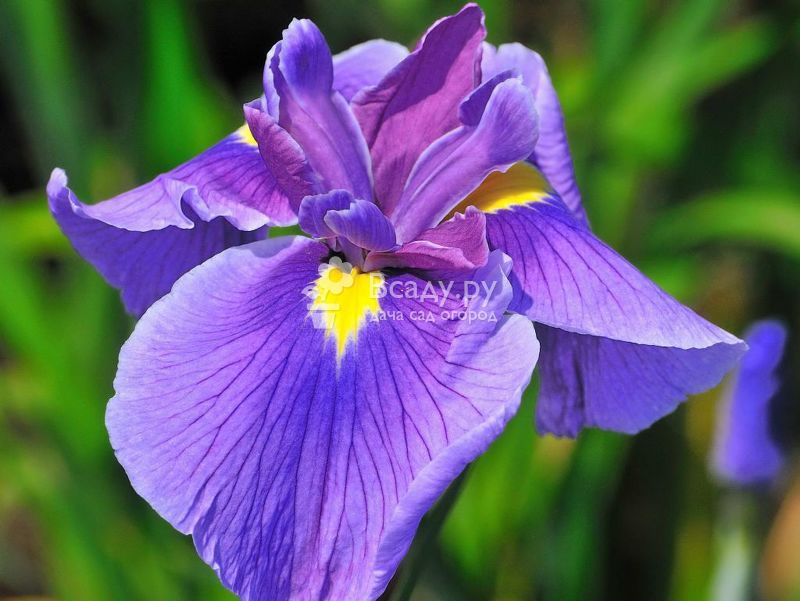
Fragrant buds of a deep blue hue with a beautiful yellow core. They are classified as tall plants with an average flowering period.
Starfall
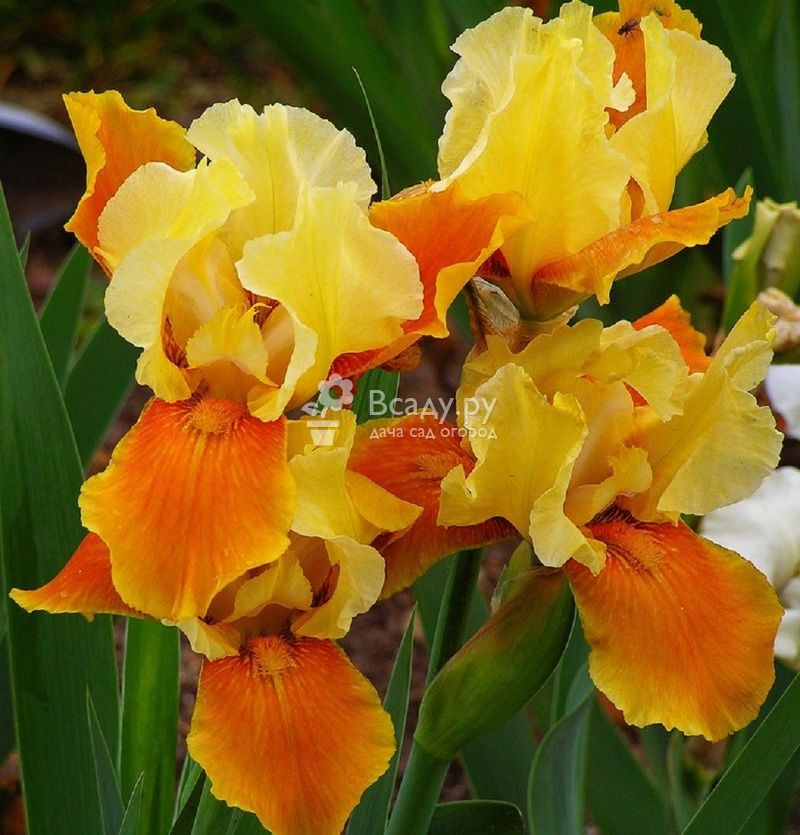
Medium early pale yellow irises with orange beard. These plants are also very tall (from 75 cm), but their smell is no longer so pronounced.
Arkady Raikin

The flowering period of this tall flower is medium. The rose-red bud with contrasting orange edging pleases with its spectacular appearance and strong aroma.
Abkhazia
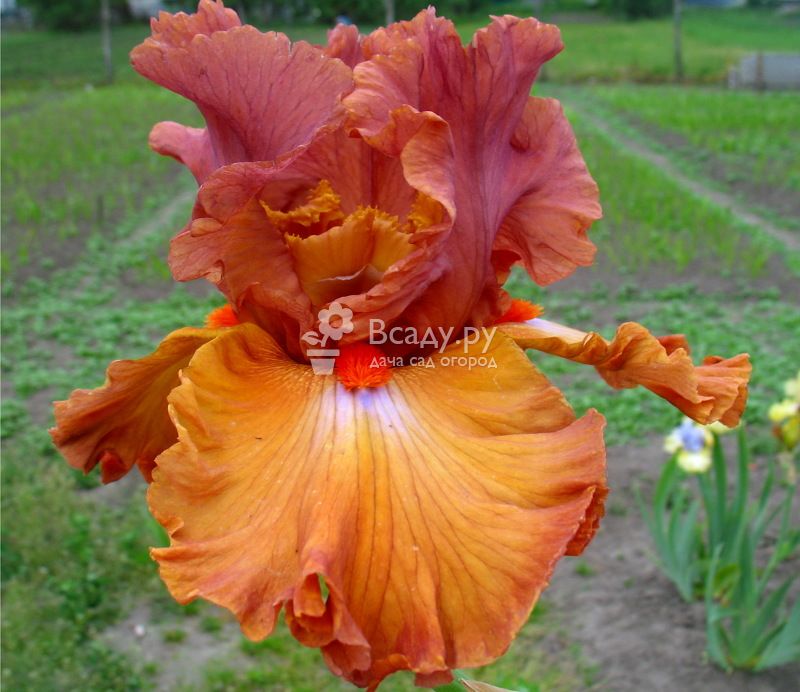
Late bearded irises with large purple-brown flowers. The large folds of the leaves resemble a fringe. These plants usually grow to medium size.
Guards
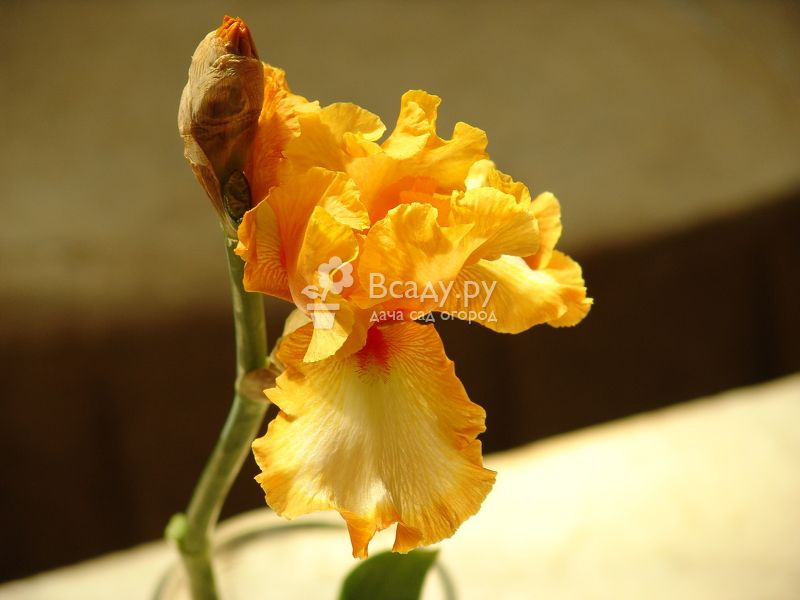
Mid-early, have bright yellow massive inflorescences, reaching 15 cm in diameter. They are classified as tall and especially fragrant.
Elbrus Diamond
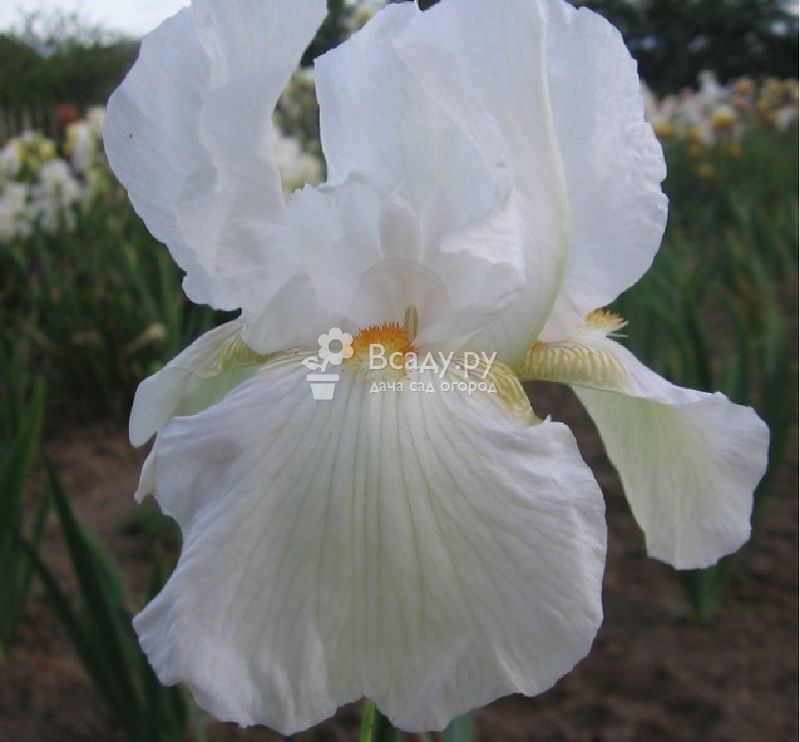
Large white with a yellow-orange core and veins. One of the best representatives of tall species with excellent aroma.
Alatau
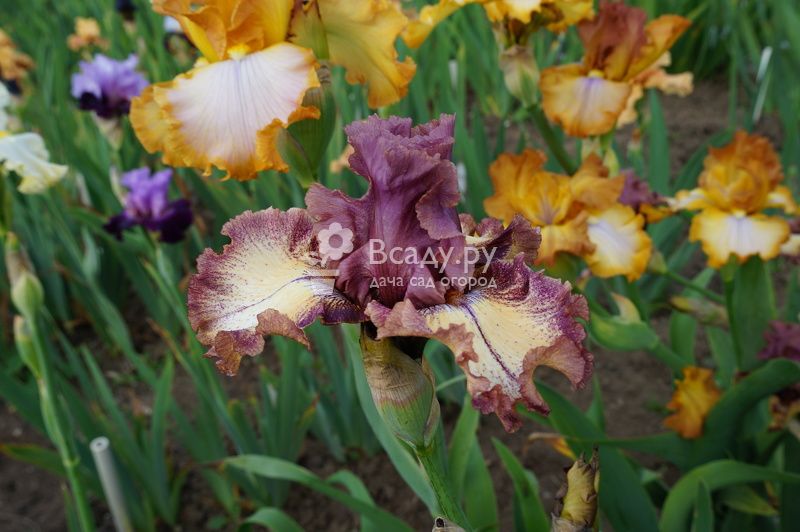
Irises of the Alatau variety are of low growth. The flowers, as a rule, are small and two-colored: the outer part is purple, and the inner part is milky white. The yellow border makes them even more attractive.
Description
The iris inflorescence is different from many plants.In structure, it resembles an orchid, since there are no sepals and petals. Buds, most often solitary and slightly fragrant.

The bottom of the bud forms a tube containing nectar. Stems can be either single or in bunches, simple or branched. Leaves are located at the base of the stem. They have a flat and xiphoid shape.

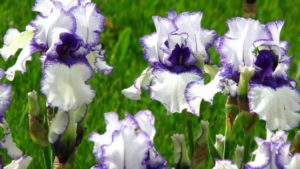
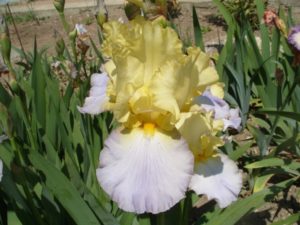
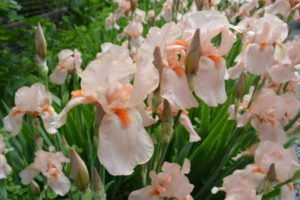




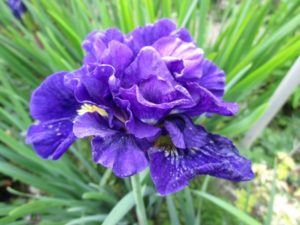
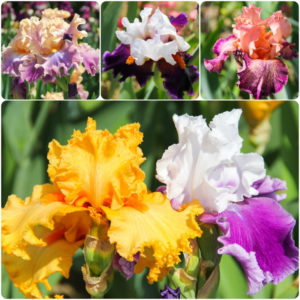
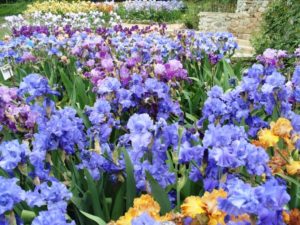
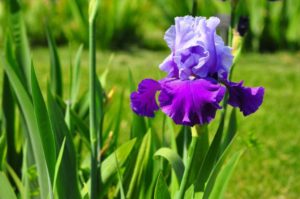
This flower grows best on slopes. In the same area, a plant can grow without transplanting for about 7 years.

Iris varieties are striking in their variety. By color, you can determine which variety this or that iris belongs to.

Caring for retro irises in the garden
In fact, caring for retro irises comes down to weeding. Weed control is an important part of the retro iris care program. It should be started even before planting, not allowing the weeds to grow too much in the immediate vicinity of the plants in the future. The soil in plants is not loosened or this procedure is carried out superficially, trying not to touch or injure the roots of the plant.
Retro irises will need watering only if the stage of budding and the beginning of flowering coincides with a very severe drought and heat. Pruning and shaping is reduced to a simple cut of leaves in the fall (up to a height of 10-15 cm) and the removal of damaged parts of the plants.
Top dressing for retro irises can be carried out according to a simplified scheme, because they are much less demanding on the nutritional value of the soil. One top dressing with a full mineral fertilizer in a standard amount, carried out in the spring, or two dressings in early spring and during budding is enough for a more lush flowering.
Wintering irises from among the retro varieties will not be difficult even where problems usually arise with other bearded irises. Due to their predominantly European origin, they tolerate severe frosts better, are more resistant to temperature fluctuations and any unfavorable conditions.
Pests and diseases on retro iris varieties have to be encountered less often, even if the plants suffer from insects, they usually recover much better than their competitors.
Retro irises are propagated in the same way as any other bearded irises. The most productive way is to divide adult plants between the ages of 3 and 5 years.

